Myths Debunked: Modern Components are NOT Always Lighter
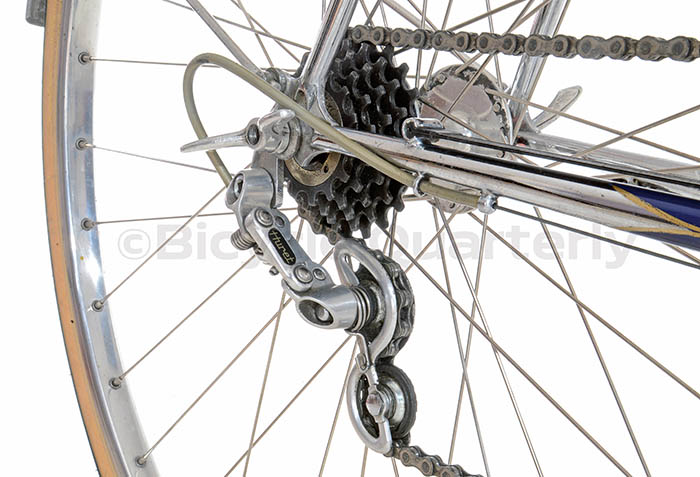
To celebrate Bicycle Quarterly‘s 15th anniversary, we are looking at myths in cycling – things we all used to believe, but which we’ve since found out not to be true. During these 15 years we’ve learned a lot, and perhaps the most intriguing discovery is that modern parts aren’t as light as some classics. In some cases, there are functional reasons why modern parts are heavier. At other times, modern parts really could be lighter.
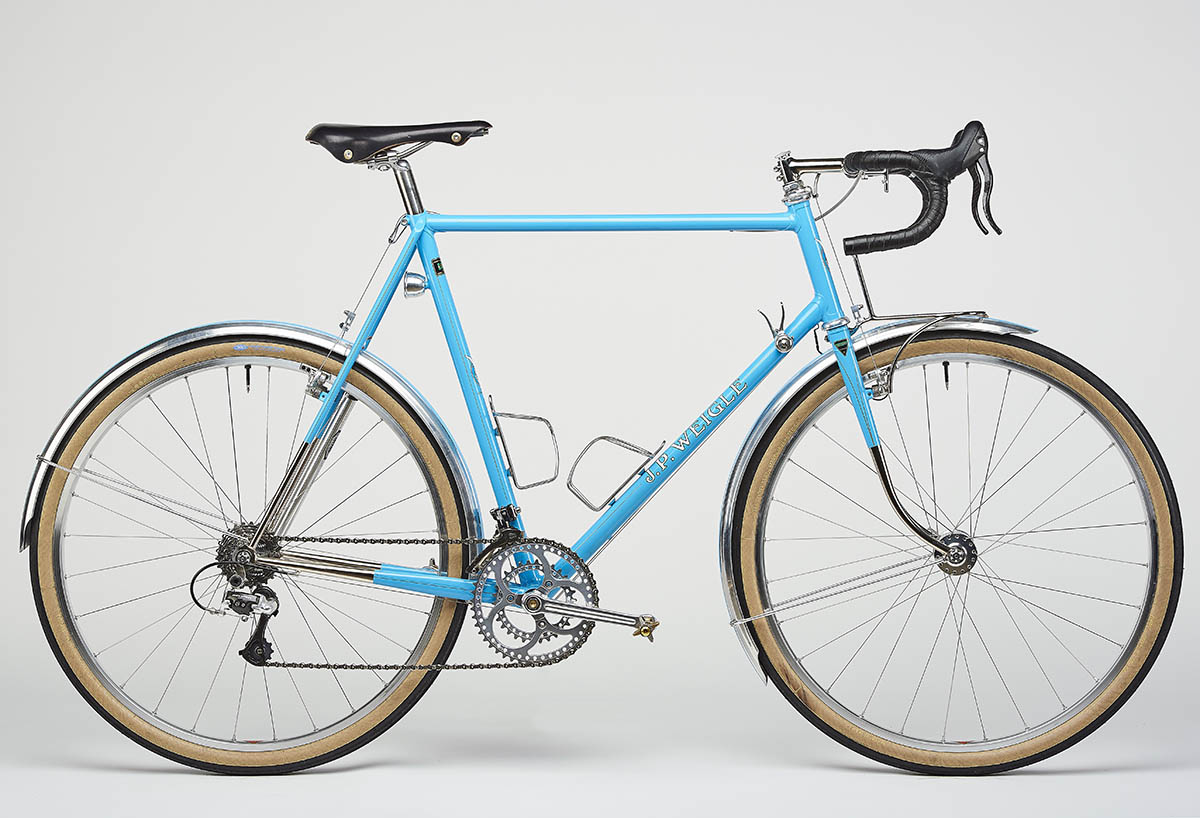
When Bicycle Quarterly and Peter Weigle entered a the bike in the French Concours de Machines, many were surprised that a fully equipped bike (above) could be so light: 9.1 kg (20.0 lb) with fenders, rack, lights, wide tires, pedals, even a pump and a bell. And yet we didn’t compromise everyday usability or durability in the quest for light weight: The bike is equipped with a SON Wide-Body generator hub, not a minimalist (and noisy) sidewall generator. We used 28 spokes for the wheels, which have stayed true for thousands of miles. A Berthoud leather saddle ensures comfort for long-distance riding. It’s a no-compromise bike.
Perhaps the most surprising part was that the bike featured almost no carbon parts. How could a ‘classic’ bike be so light?
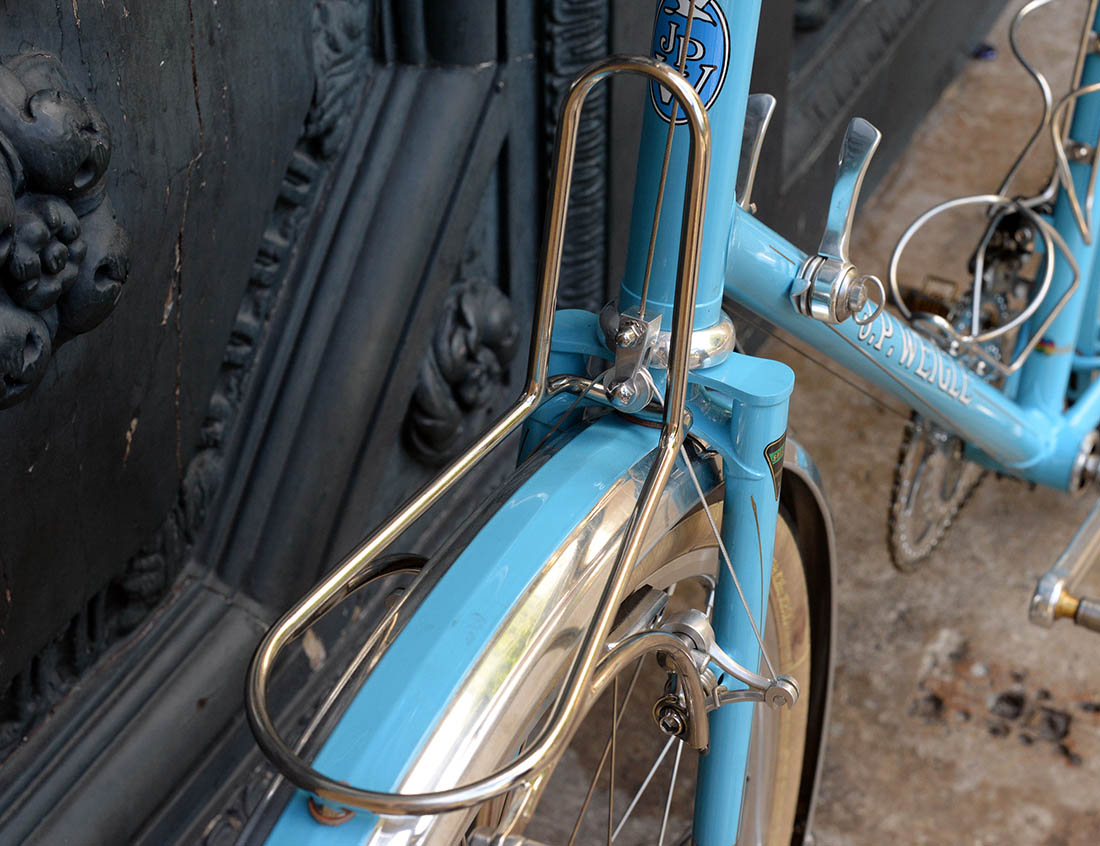
We saved weight by using downtube shift levers. Not only are the levers lighter, but most of all, they eliminate the heavy cable housing to the handlebars.
The Rene Herse cantilever brakes also are superlight, due to a combination of minimalist design and the fact that, like all cantilever brakes, they attach to the fork blades. Most racing brakes still attach to the fork crown, even though they no longer pivot around a ‘center bolt.’ Reaching around the tire and transmitting all the forces to the top requires extra material.
Most of our competitors used disc brakes, which add further weight, because they use a second rotor, when the wheel rim already is available for that job. (Disc brakes have some advantages, but light weight isn’t one of them.)
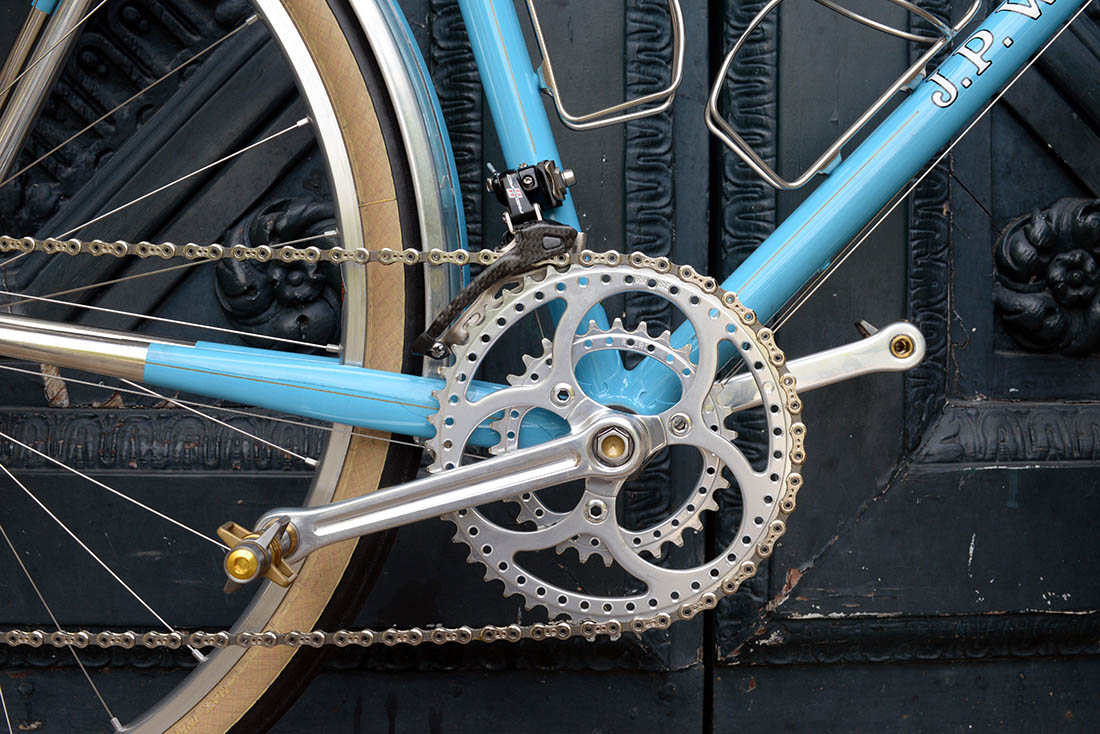
Modern cranks also tend to be heavier than necessary. Until recently, they used five spider arms, even though three are enough – provided you can make the chainrings to very close manufacturing tolerances, so they don’t wobble. Now most component makers have gone to four arms. Three arms, as used on our Rene Herse cranks, are the logical next step.
The weight savings aren’t just in the arms, but also the rings. And with only three chainring bolts, we can make them from strong steel, yet they weigh no more than five titanium bolts. Steel bolts allow higher tightening moments, which increases the friction between crank spider and chainrings that transmits the torque.
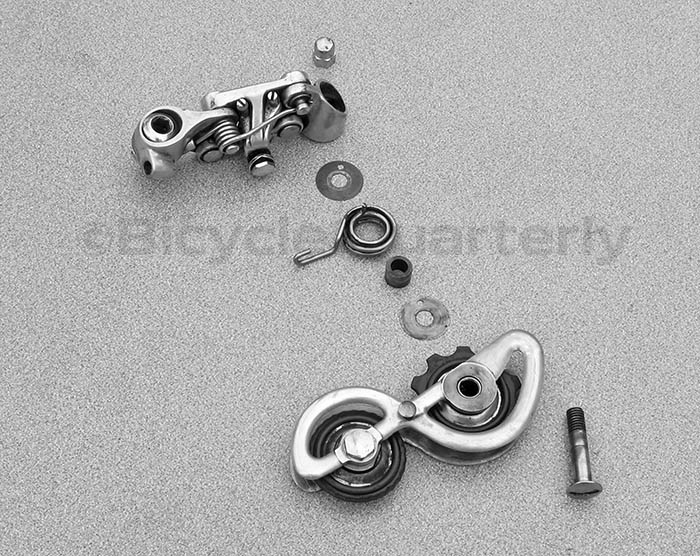
We could have used a lighter derailleur – the Campagnolo derailleur on the bike weighs 198 g, or 50% more than a 1970s Huret Jubilee (132 g; above and top photo).
The Jubilee isn’t a flimsy featherweight: I’ve covered more than 80,000 km (50,000 miles) on the used Jubilee that came with my Alex Singer, and I can report that it shifts great, even after all those miles. The light weight of the Jubilee derailleur is even more surprising when you realize that all the bolts are made from steel. There are even locknuts that allow adjusting the play in the derailleur pivots (something few other derailleurs have). And there are real, adjustable ball bearings in the pulleys.
Why are modern derailleurs so much heavier? One reason is that they have to swing farther to cover 11 cogs. Longer parallelogram arms weigh more, and a longer parallelogram has more leverage, so the derailleur needs to be stronger. Even so, it seems that modern derailleurs could be lighter – the latest Campy Super Record is made almost entirely from carbon fiber, yet it still weighs 166 g.
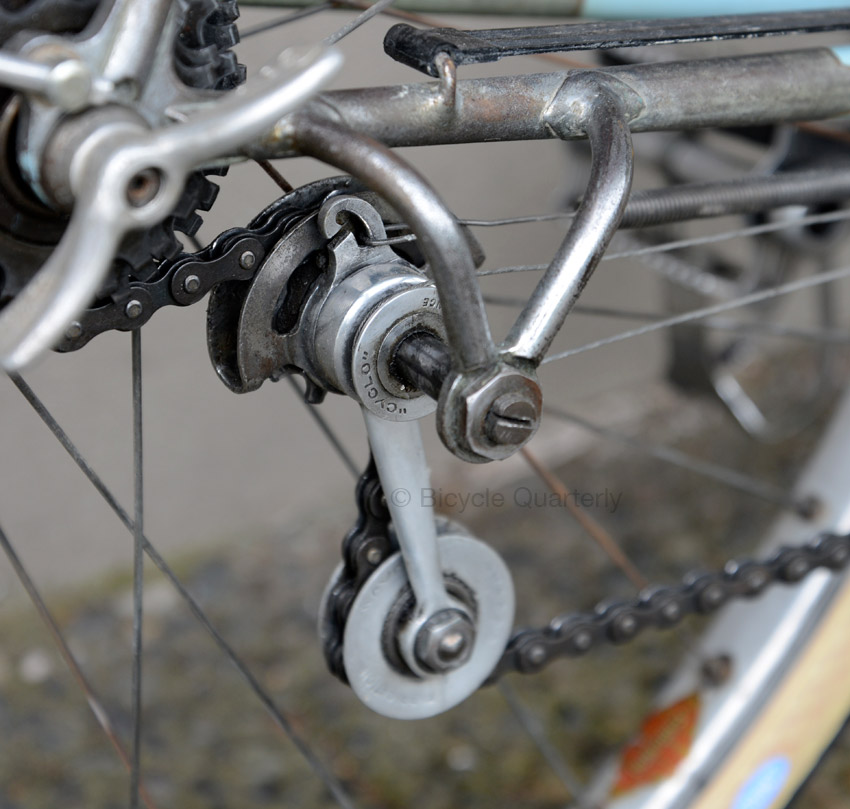
One could start with this 1950s Cyclo derailleur – it’s already lighter than the Campagnolo on the Concours bike, plus it eliminates the cable housing to save further weight. And since its desmodromic action uses the cable to move the derailleur in both directions, it doesn’t have a return spring. This means the shift lever can be lighter, too, since it doesn’t need friction to counter the spring tension. It makes for a delightfully lightweight shifting action, too – a perfect match for the light action of modern brakes.
The Cyclo’s design has some drawbacks (it doesn’t handle mud well), but it shows that derailleurs don’t all have to look like copies of the 1949 Campagnolo Gran Sport, with just a few carbon fiber parts replacing steel in the quest for light weight.
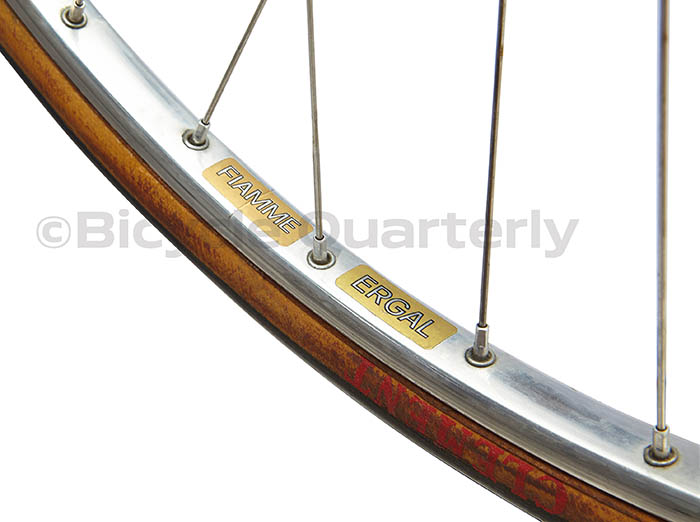
Classic rims often were lighter than modern ones, too. The Fiamme Ergal weighed just 290 g. I raced on these rims for years without problems. And the Ergal wasn’t even the lightest rim. The Scheeren Weltmeister was a true flyweight, at 220 grams. It used tiny wooden blocks under the spoke nipples to keep the thinwall aluminum extrusion from collapsing.
You can’t use rims this light on modern rear wheels, because with 8 or more cassette cogs, you get a lot of dish in the wheel, which in turn requires ultra-high spoke tension. Superlight rims aren’t strong enough for that.
But how about a superlight rim for the front wheel only? Wide tires greatly reduce the stresses on the wheel. A 200 g front rim should be all you need, especially since disc brakes have eliminated the need for extra material that wears off as you brake.
Of course, these were tubular rims, and few of us ride tubulars any longer. In the end, most cyclists are willing to trade a little extra weight for the convenience of clincher tires, of more gears, and of indexed shifting.
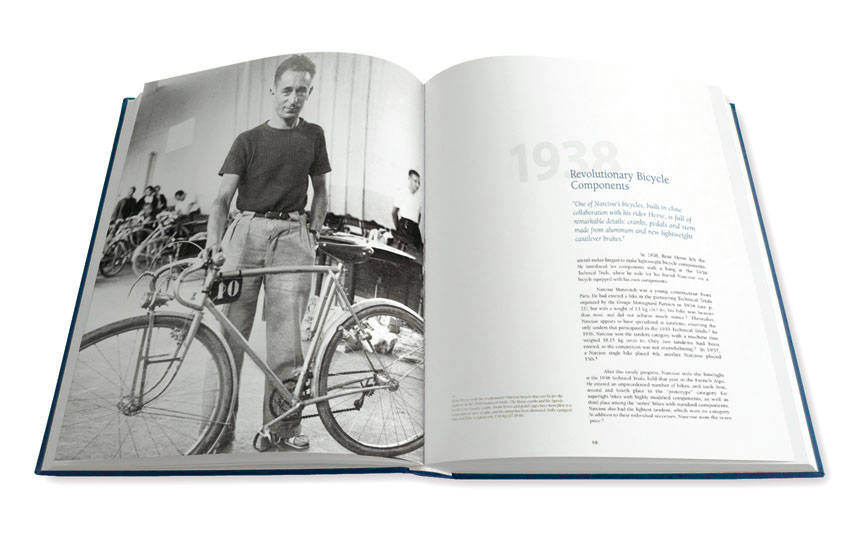
And yet, when you look at the history of the Concours de Machines, you realize how light a bike could be. René Herse’s 1938 bike (above) weighed just 17.5 lb (7.94 kg), fully equipped. Take off the lights, fenders, rack and pump, and that bike would be skirting the UCI weight limit of 6.8 kg, even with its wide clincher tires, steel frame and leather saddle. That is truly impressive, especially since that bike then was ridden at speed for hundreds of miles across rough, unpaved mountain roads, loaded with heavy bags. And it didn’t break.
When I learned about the superlight bikes made by René Herse and other mid-century constructeurs, it got me thinking about how modern bikes could be improved. I am not saying that we should all equip our bikes with ancient Cyclo derailleurs and cut off the ends of our handlebars (as Herse did in his quest for light weight). But given a choice, I prefer a lightweight bike, especially if it doesn’t affect function or durability. Instead of replacing hardware with questionable aluminum bolts (as is done on many modern superlight bikes), at Rene Herse Cycles, we try to think outside the box to make parts that are smart, durable and light.
Further reading:
- Bicycle Quarterly‘s ‘Icon’ column featured the Huret Jubilee derailleur (BQ 49) and the Fiamme Ergal rim (BQ 58)
- The story of René Herse and Concours de Machines was told in our book René Herse: The Builder • The Bikes • The Riders.
- Learn how the old derailleurs shift on the road in Bicycle Quarterly 14 (cyclotouring derailleurs, including the Cyclo) and BQ 16 (racing derailleurs, including the Huret Jubilee).
- Other posts in the Myths in Cycling series


